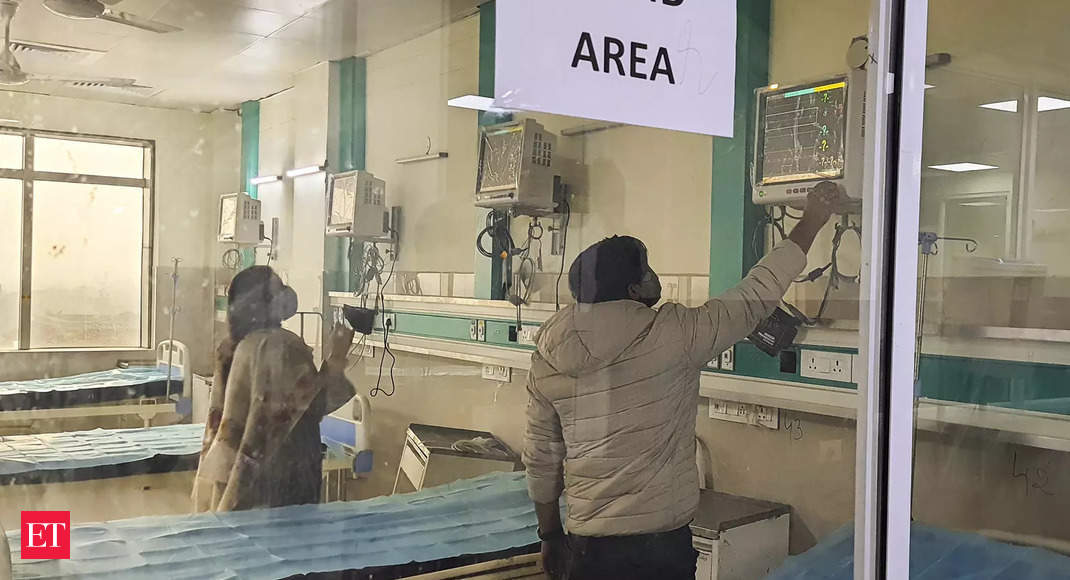
Gearing up for the future: Strengthening India’s pandemic preparedness and response
The relevance of pandemic preparedness and the need for having an appropriate response has increased owing to the COVID-19 pandemic, an infectious disease which, as of January 2023, has claimed more than six million lives and infected more than 660 million people, globally (World Health Organization COVID-19 Dashboard). In India, the pandemic has claimed over half a million lives in the last three years (Ministry of Health and Family Welfare, Government of India). The pandemic occurred amid the implementation of the Sustainable Development Goals (SDGs) and has significantly impacted the progress on achieving the targets. While the rise in extreme poverty due to COVID-19 will lead to missing the targets set for eradicating poverty (SDG 1), the progress on SDG 3 ‘good health and wellbeing’ has also reversed. The second SDG of a hunger-free world will be missed, with nearly 660 million people facing acute food shortages due to COVID-19 impact (World Economic Forum 2021). This humanitarian crisis and its resultant socio-economic impact has highlighted the need to redesign and strengthen the approach to prepare for future health emergencies, especially pandemics. The pandemic exposed the fragility of health systems across the globe; high income countries were as much impacted as low and middle-income countries. The Indian health system was stretched too, due to inadequate public health infrastructure, shortage of hospital beds, lack of emergency equipment and supplies (such as ventilators and oxygen), and limitations in data systems for effective decision making. The global community, taking lessons from the COVID-19 pandemic, has initiated steps in this direction. The Organization for Economic Cooperation & Development’s policy response ‘Building back better’ to not only getting economies and livelihoods back on track, but also safeguarding prosperity for longer term and World Health Organization (WHO)’s ten proposals to strengthen the global architecture for health emergency preparedness, response, and resilience (HEPR) are a welcome move. The recent launch of the Pandemic Fund by the World Bank is another initiative to promote pandemic preparedness and response. Although there are numerous institutions and financing platforms that aid activities in this direction, this would be a platform solely focused on providing critical financial investments to strengthen required capacities at national, regional, and global level. India, too, has taken initiatives to ramp up the whole-of-the-government and whole-of-society response to manage future health emergencies in a more agile and efficient manner. The launch of the Aarogya Setu application during the COVID-19 outbreak allows communities to participate in disease surveillance. Furthermore, initiatives such as the Pradhan Mantri- Ayushman Bharat Infrastructure Mission (PM-ABHIM), National Digital Health Mission (NDHM), One Health Consortium and Integrated Health Information Platform (IHIP) are also steps taken to prepare better for health emergencies. While PM-ABHIM focuses on strengthening healthcare systems through enhanced capacity of National Centre for Disease Control, establishment of health and wellness centres and network of laboratories, One Health Consortium aims to initiate cross-cutting collaborations between animal, human and environmental health. India has also signed up to WHO’s ‘Triple Billion targets by 2023’, a measurement and policy strategy to ensure that, globally, one billion more people benefit from the universal health coverage, and are protected from health emergencies, so they can enjoy better health and wellbeing. In addition to these initiatives, certain other critical elements would also require dedicated efforts to strengthen India’s pandemic preparedness and response. Strengthening private sector participation, leveraging digital systems, engaging pharmaceutical industry, and increasing government expenditure on health as percentage of the Gross Domestic Product (GDP) are expected to have far reaching gains in India’s strategy to be future ready for any health emergency. As per the national health estimate 2018-19, the current health expenditure (% of GDP) in India is at 3.16 per cent of which the government health expenditure is only 1.28 per cent. This is far from the target of 2.5 per cent of government expenditure on health (National Health Policy 2017) and hence, needs to be increased. Though the private health sector caters to nearly three-fourth of out-patient load in India, their participation on some of the components of health emergency preparedness and response remain low. Mechanisms to engage private sector in providing hospital and diagnostic resources and initiating newer service delivery platforms should be explored, along with enhancing their participation in disease surveillance. With the explosion of digital health technologies in India, digital innovations are the way forward to unify and integrate the plethora of health-related data platforms. Measures like linking morbidity and mortality data to help estimate disease burden by geographies and integration of Integrated Health Information Platform with National Animal Disease Reporting System (NADRS), to ensure integrated reporting under One Health, can help translate data into meaningful and timely response plan. The pharmaceutical industry has proven to be a dependable partner during the COVID-19 crisis by ensuring an adequate access to counter measures within the country. It has also lent a helping hand to the partner nations, which should be further leveraged for pandemic preparedness and response. With the roll out of schemes for strengthening the pharmaceuticals industry, the country is well-placed to incorporate measures for manufacturing preparedness and response for health emergencies. With India taking over the G20 presidency, the national government has highlighted tackling health emergencies as one of the three focus areas for the health working group. This will require dedicated efforts by India to leverage global partnerships for pandemic preparedness and response, and will also drive India’s approach to become the voice of the global south. (The author is a Partner – Social Sector at PwC India)
